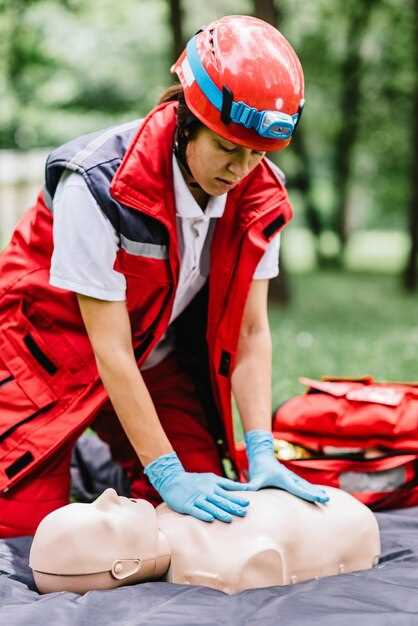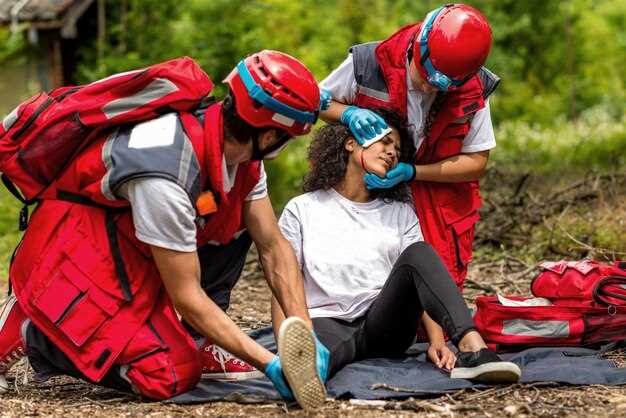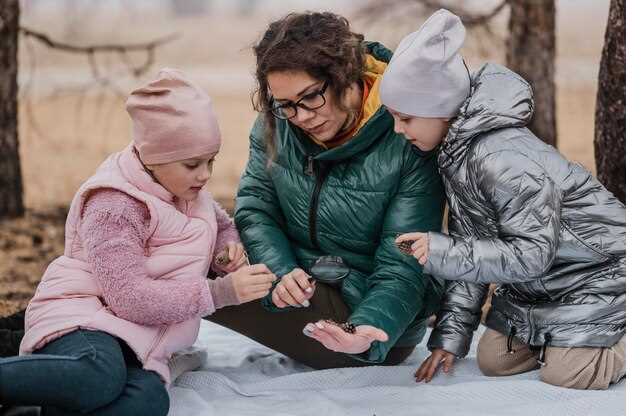
In the unpredictable environment of the wilderness, safety is not just an option; it is a necessity. Understanding and mastering first aid skills is crucial for anyone venturing into remote areas. Whether you are hiking, camping, or engaging in other outdoor activities, the knowledge of basic first aid can significantly improve your chances of managing injuries or medical emergencies effectively.
First aid skills empower outdoor enthusiasts to respond confidently in critical situations. From treating cuts and bruises to managing more severe incidents such as fractures or allergic reactions, being prepared can mean the difference between life and death. In remote settings, where professional medical help may be hours away, your ability to administer first aid becomes even more vital.
Learning first aid for wilderness safety goes beyond just acquiring skills; it instills a sense of self-reliance and reassurance. This knowledge allows you to tackle various potential hazards with greater composure, ensuring not just your safety but also that of your companions. By mastering these essential skills, you are better equipped to enjoy your outdoor adventures, knowing you can handle emergencies should they arise.
Assessing Injuries in the Wilderness
When in a remote wilderness setting, the ability to assess injuries promptly and accurately is crucial for ensuring safety. The first step involves identifying the nature and severity of the injury by observing the affected person and gathering information about the incident. This initial assessment can significantly impact the type of first aid provided.
Begin the evaluation by checking for responsiveness. If the individual is unconscious or non-responsive, check for breathing and pulse. If they are conscious, ask about their symptoms and how the injury occurred. It’s essential to remain calm and reassuring to help the injured person feel safe.
Next, examine the injury site for visible signs such as swelling, bleeding, or deformity. For wounds, determine if there is a foreign object embedded. Control any bleeding by applying direct pressure, if necessary. Ensure to prioritize assessing life-threatening conditions, such as severe bleeding or difficulty breathing, as these require immediate intervention.
Additionally, ask about pain levels and any other associated symptoms like dizziness or nausea. This information helps gauge the injury’s severity and can guide further first aid interventions. Be aware that some injuries, such as fractures, may not be immediately evident but can become more apparent upon movement.
Once the injury has been assessed, make decisions on the appropriate first aid measures. Depending on the circumstances, stabilization or evacuation of the injured person may be necessary. Regularly monitoring their condition is also vital, as it can change over time due to environmental factors or stress.
In wilderness situations, having the skills to assess injuries accurately can mean the difference between effective first aid and further complications. Prior preparation and practice are essential in mastering these skills for remote wilderness safety.
Essential First Aid Supplies for Outdoor Adventures

When preparing for outdoor adventures, having the right first aid supplies is crucial for safety. Emergencies can occur in remote areas, making it essential to be equipped with the proper items to handle injuries and medical situations. Below is a list of essential first aid supplies that every outdoor enthusiast should have.
First, a well-stocked first aid kit is fundamental. It should contain adhesive bandages of various sizes for cuts and scrapes, sterile gauze pads to dress larger wounds, and medical tape for securement. Antiseptic wipes or solutions are necessary to clean injuries and prevent infection.
Additionally, it is important to include pain relievers like ibuprofen or acetaminophen to manage discomfort. A digital thermometer can help monitor body temperature, especially in cases of heat exhaustion or hypothermia. Adhesive dressings and a triangular bandage can be useful for creating slings or stabilizing injuries.
For outdoor adventures, a pair of tweezers is invaluable for removing splinters or ticks. It is advisable to carry scissors for cutting tape or gauze. Furthermore, a whistle can serve as a signaling device in an emergency situation, contributing to overall safety.
Don’t forget to pack any personal medications that may be required. It’s helpful to include a list of medical conditions and allergies as well. For more serious injuries, a compact CPR face shield can provide essential protection when giving aid.
Injuries from insect bites and stings are not uncommon during outdoor activities. Thus, an insect bite relief ointment and antihistamines can alleviate symptoms. A cold pack or instant ice pack is also beneficial for reducing swelling and pain.
Finally, ensure to regularly check and replenish your first aid supplies, especially after a trip. Being adequately prepared with these essential first aid supplies will enhance safety and confidence during outdoor adventures.
Performing CPR: Wilderness Considerations
When engaging in outdoor activities, understanding how to effectively perform CPR can be a vital skill for ensuring safety in remote environments. Wilderness settings often present unique challenges that can impact the delivery of first aid. Here are key considerations to keep in mind when performing CPR in such circumstances:
| Challenge | Consideration |
|---|---|
| Environment | Assess the surrounding environment for hazards, such as uneven terrain or nearby water sources that might complicate the situation. |
| Rescue Breaths | In outdoor settings, additional factors like wind and dirt may affect the feasibility of delivering rescue breaths. If necessary, focus on chest compressions. |
| Contacting Help | Evaluate the availability of communication devices. If possible, call for emergency assistance while continuing CPR. |
| Privacy and Space | Ensure you have enough space to perform CPR effectively. Clear the area of bystanders and obstacles. |
| Duration | In remote areas, help may take longer to arrive. Be prepared to administer CPR for an extended period until professional medical assistance is available. |
Remember, effective CPR involves a rhythm of 30 compressions followed by 2 rescue breaths if safe to do so. Maintain proper hand positioning and force during compressions. In the wilderness, staying calm and methodical is crucial to provide first aid effectively and enhance the chances of survival.
Treating Hypothermia and Heat-Related Illnesses
Safety in outdoor environments demands a solid understanding of various health risks, including hypothermia and heat-related illnesses. Knowing how to treat these conditions is crucial for first aid in wilderness settings.
Hypothermia: This condition occurs when the body loses heat faster than it can generate it, causing core temperature to drop. It can occur in cool or wet conditions, even in mild temperatures.
- Signs of Hypothermia:
- Shivering or shaking
- Confusion or memory loss
- Slurred speech
- Weak or irregular heartbeat
- Treatment Steps:
- Move the person to a warmer environment, if possible.
- Remove wet clothing and replace with dry, insulated layers.
- Use body heat by huddling or providing warm blankets.
- Give warm (not hot) beverages to rehydrate, if conscious.
- Seek medical assistance if symptoms are severe.
Heat-Related Illnesses: These conditions arise from prolonged exposure to high temperatures, leading to overheating of the body.
- Types of Heat-Related Illnesses:
- Heat Exhaustion
- Heat Stroke
- Signs of Heat Exhaustion:
- Heavy sweating
- Weakness and dizziness
- Nausea or vomiting
- Muscle cramps
- Treatment for Heat Exhaustion:
- Move the person to a shaded or air-conditioned area.
- Encourage hydration with cool water or sports drinks.
- Apply cool, wet cloths to the skin.
- Signs of Heat Stroke:
- Body temperature above 103°F (39.4°C)
- Altered mental state or confusion
- Dizziness or loss of consciousness
- Treatment for Heat Stroke:
- Call emergency services immediately.
- Move the person to a cooler place.
- Cool the body with soaking, fanning, or ice packs.
Overall, recognizing symptoms and providing prompt first aid is essential for managing hypothermia and heat-related illnesses during outdoor activities. Always ensure you have a first aid kit and know how to use it effectively in remote environments.
Managing Dehydration and Nutritional Needs in Remote Areas
In remote wilderness settings, proper safety measures are crucial for maintaining health and well-being. One of the fundamental aspects of outdoor survival is managing dehydration and meeting nutritional needs. Both can become critical challenges when access to resources is limited.
Hydration is vital for physical performance and cognitive function. Dehydration can onset quickly, especially during outdoor activities in warm climates or at high altitudes. Signs of dehydration include dizziness, dry mouth, and fatigue. To mitigate these risks, always carry an adequate supply of water. In areas where natural water sources are available, remember to purify it before consumption. Utilize water purification tablets or filters to ensure it is safe to drink.
In addition to drinking water, it’s essential to consider electrolyte balance. When sweating, the body loses not only water but also valuable electrolytes. Consuming sports drinks or eating snacks that contain electrolytes can help replenish what is lost. In remote environments, rationing water and spreading out consumption over time can keep hydration levels stable.
Nutritional needs also play a significant role in ensuring safety in outdoor settings. A well-planned diet is essential for maintaining energy levels during physical exertion. Focus on high-energy foods that are lightweight and easy to pack, such as nuts, dried fruits, and energy bars. These options provide crucial carbohydrates, fats, and proteins needed for sustained energy.
When planning meals, consider calorie density to make the most of limited space. Foods rich in calories but low in weight are ideal for remote camping trips. Additionally, pre-packaged meals can save time and effort, ensuring you maintain adequate calorie intake without extensive cooking.
It’s crucial to adapt your dietary choices based on the length of your outdoor adventure and available resources. In the wilderness, keep track of your food and water supplies to avoid running low. Utilize any foraged items safely, but ensure you can accurately identify edible plants to prevent accidental poisoning.
In conclusion, effectively managing dehydration and nutritional needs in remote areas is essential for first aid and overall outdoor survival. Proactive preparation and continuous monitoring of hydration and caloric intake can help ensure a safe and enjoyable wilderness experience.
Communicating Emergency Situations Without Cell Service

In outdoor settings where cell service is unreliable or non-existent, effective communication is crucial for safety during emergencies. Understanding alternative methods can significantly enhance the chances of receiving help.
First, carrying a personal locator beacon (PLB) or satellite communicator can be a lifesaver. These devices send out distress signals with your GPS location, allowing rescuers to find you even in remote areas. Ensure your device is fully charged and tested before heading into the wilderness.
Another method is to establish predetermined emergency signals with your group or fellow adventurers. Visual signals such as smoke, flashlights, or reflective materials can be used to attract attention. For instance, three short blasts of a whistle can indicate a call for help, while three fires arranged in a triangle can signal distress.
If you run into emergencies while away from communication devices, utilize basic signaling techniques. Creating visible markers such as large SOS signs made from rocks or branches can alert Search and Rescue teams from above. Always consider the terrain and potential sightlines when positioning these markers.
Additionally, maintaining an emergency plan is essential for outdoor safety. Inform someone of your itinerary before departure, including expected return dates. In case you do not return on time, this individual can initiate a search in the correct location.
Lastly, developing survival skills such as navigation using a compass and map can help you reach a known location that may have cell service or facilitate easier communication with potential rescuers. Remember, being prepared and knowing how to communicate without cell service are vital components of wilderness safety.
